Description
Introduction to The Secrets of El Ninja
Smooth, fast, quiet, comfortable, clean, and economically smart—that’s what
electric motorcycles are all about. In most locations, oil products are not used
to produce the electric energy used for charging batteries, and the cost of running
an electric motorcycle is less than one-third the cost of running a gas motorcycle.
Plus, the amount of smog-producing emissions created when driving an electric
motorcycle is zero.
This book explains how to easily convert a gas motorcycle to electric power in
your own garage with standard hand tools (no welding or machining required).
It describes all the technology fundamentals, performance tradeoffs, and design
decisions involved in converting a gas motorcycle. It then walks you through a
straightforward and highly efficient example conversion of a 1987 Kawasaki
750 sport bike, showing you "The Secrets El Ninja." As a bonus, this book
also covers maintenance and repair of the electrical components of any electric
motorcycle.
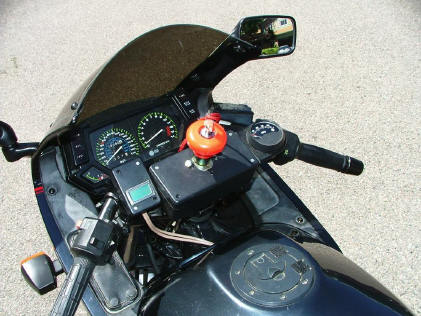
El Ninja — An Example Conversion
El Ninja combines a gas motorcycle (based on a stock motorcycle rolling
chassis) with a high-power electric vehicle motor, a high-power Mosfet
transistor controller, and a set of affordable, readily available batteries. The
result is a long-range (40 miles of stop-and-go driving), high-performance,
60 MPH machine.
The motor used in El Ninja is the high-performance Etek motor that can be
operated at 36, 48, 60, or 72 volts. At 48 volts and 450 amps, the Etek
delivers 15+ peak horsepower. The El Ninja design accommodates a
variety of other motors, controllers, and battery options as well.
The electric components (motor, controller, power switch, throttle, etc.,)
are available by mail order and/or from Web electric vehicle (EV)
component suppliers. See the Vendor List and Material List in the
Appendix for assistance with obtaining these items.
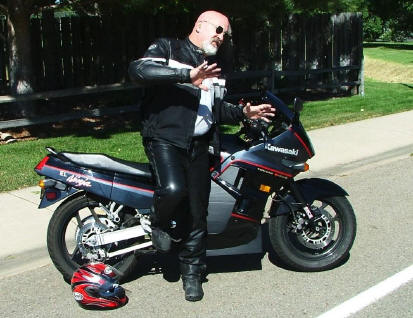
Electric Motorcycle Conversions — Easier Than You Think
An electric motorcycle conversion is easier than an electric car conversion
because you don’t have to worry about the transmission and clutch, power
steering, vacuum pumps, heaters, air conditioners, and the weight and size
of everything that gets moved around. An El Ninja-type conversion is even
easier than most motorcycle conversions because the battery and motor
mounting are so straightforward and provide configuration flexibility. After a
thorough description of technology, performance and maintenance, this book
will describe the design tradeoffs in converting a gas motorcycle to an electric
motorcycle. It will then walk you though the El Ninja building process, using
step-by-step build descriptions, CAD drawings, CAD mockups, and
photographs of the conversion process.
There are other motorcycle rolling chassis available that you can use instead
of the ‘87 Kawasaki Ninja to build a comparable motorcycle. By using the
design and build concepts in this book, you can convert almost any gas
motorcycle to an optimized, useful electric motorcycle.
Motorcycle rolling chassis are available from a variety of sources. See the
How to Find the Right Donor Gas Motorcycle section of Chapter 4.
Building El Ninja, as with many motorcycle conversions, is primarily a
battery/motor mounting-and-assembly project. No welding or machining
is required to complete the El Ninja conversion. Selecting the right motor,
controller, batteries, and drive sprockets is fundamental to a successful
conversion. This book describes how to select these components after the
initial design and offers a strategy for evolving the design with upgrades.
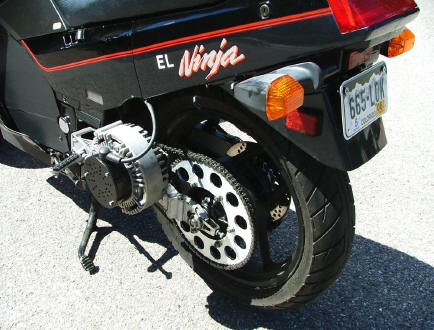
Some of the motor options are: the high-performance Etek motor, the Perm
motor, and several Advanced DC series wound motors. El Ninja’s design is
especially versatile because it allows you to begin with fewer batteries,
providing limited speed and range but a lighter weight. Then, later you can
upgrade to more batteries (i.e., a higher voltage) for more performance and
longer range. Using smaller batteries for quicker acceleration is another option.
One frame accommodates all the configurations. Several of the many possible
combinations are shown in the table below. Also, see the Selecting and
Mounting Batteries and the Selecting and Mounting the Motor sections
of Chapter 4.
Registering and Licensing Electric Motorcycles
When configured with the full-power options, electric motorcycles are registered,
insured, and operated as a motorcycle. However, electric motorcycle versions can
be configured to meet the 30-MPH moped or scooter licensing rules in most states.
(Consult your local authorities for the rules and regulations in your area.)
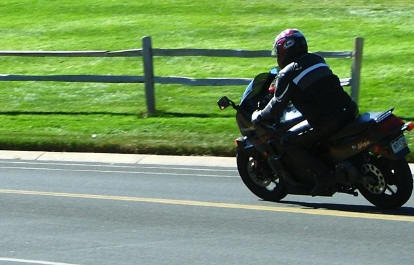
How Electric Motorcycles and El Ninja Work
Since DC electric motors develop maximum torque at zero RPM, this allows
electric motorcycles to have excellent starting performance. The motor-to-wheel
gear ratio can be changed easily with different sprockets to provide higher speeds
or more low-end torque at the drive wheel. The DC electric motor is a DC
permanent magnet type that is specifically designed for electric vehicles. This
motor can run continuously and very efficiently at all speeds without overheating.
The motor is mounted on the swing arm to collect maximum airflow and maintain
a constant chain distance from the motor to the rear wheel for precise chain
tensioning (see photo below left).
Electric motorcycles use a solid state, pulse width modulation (PWM) circuit to
efficiently handle varying power to the drive wheel. This PWM circuit is in a rugged
encapsulated PWM controller package matched to the DC electric motor. An
overall circuit diagram is shown below right.
The weight on El Ninja is carried as low as possible in the frame between
the wheels. The batteries are positioned to provide roughly a 50/50 weight
distribution between the front and rear wheels.
El Ninja carries a large amount of battery energy for its weight. About 50% of a
72-volt version is battery weight. This battery weight, coupled with the low rolling
resistance, gives El Ninja a range advantage over most electric two-wheelers.
These large batteries also allow for higher amp charge rates, so they can be charged
from a completely drained state to full in less than four hours with a standard 110-volt
30-amp charger.
Designing the Right Electric Motorcycle for You
Just like gas motorcycles, electric motorcycles can be designed for many different
uses and user preferences. Some are faster, some are more comfortable, some work
well around town, some are designed for a dirt country road, and some are designed
for racing. Ergonomics help decide between sport bike, standard, and cruiser. Cost,
speed, range and weight are key attributes that are always traded against each other.
Use the El Ninja models shown below and Chapter 4 to guide your own design.
Voltage |
Top speed (MPH) |
Approx. steady 30 MPH range (miles) |
Actual
stop-and-go range
(miles) |
Approx. best acceleration 0 to 30 MPH (seconds) |
Approx. maximum weight (lbs.) |
Approx. cost to build (excluding the cost of donor gas MC) |
Approx. cost to replace battery pack |
36 |
30-42 |
26 |
22 |
8 |
410 |
$1180 |
$159 |
48 |
43-60 |
35 |
28 |
7 |
456 |
$1512 |
$212 |
60 |
50-65 |
44 |
37 |
6 |
502 |
$1846 |
$265 |
72 |
60-70 |
53 |
41 |
5 |
548 |
$1684 |
$318 |
After riding and testing with most possible configurations, we determined that four
El Ninja models made the most sense:
1. El Ninja Novice Rider – (36 volts, 30 MPH , 22-mile range,
big batteries)
This lightweight El Ninja suits a rider who is new to powered two-wheelers,
but has good bicycle handling skills. This configuration could be licensed in
many states as a moped and would require minimum licensing and insurance
costs. Build costs could be minimized by using a smaller controller and fewer
options (e.g., no ammeter). This model would be easy to upgrade to have a
greater range and higher top speed just by adding batteries.
2. El Ninja Commuter – (60 volts, 51 MPH, 37-mile range, big batteries,
on-board charger)
This El Ninja works well for the rider who has a 20-mile one-way commute
and the ability to plug-in and recharge at the destination. This would recharge
the batteries enough to power the return trip, plus some out-of-the-way
shopping. This configuration could be upgraded to 72 volts and geared for
whatever top speed required to blend with traffic. However, it is not
recommended that the commute include many high-speed freeway miles due
to decreased range considerations. Possible options would include a rear
cargo case, tank bag, heated handgrips, and an O-ring chain.
3. El Ninja Pro – (72 volts, 60 MPH, 41-mile range, big batteries)
This El Ninja best suits the experienced motorcyclist who wants to enjoy
environmentally friendly around-town motorcycling on a vehicle that is also
less costly and requires less maintenance than a typical gas motorcycle. The
experienced motorcyclist might also like to tweak the gearing by changing out
the front sprocket and modifying the throttle ramp profiles of the ALLTRAX
to further customize the machine.
4. El Ninja Track – (72 volts, 59 MPH, 8- mile range, small batteries)
This very lightweight El Ninja is a great "play bike" for go-kart tracks or
drag racing. It would qualify for the 72-volt NEDRA MTI and MTH classes
to run 1/8 mile drag competition. Options might include sticky tires,
lightweight components, and exotic brake pads. El Ninja Track is stripped
of excess weight, and quick-change battery packs are used to help extend
practice times using multiple battery packs. A higher performance upgrade
could be to install a second motor on the right swing arm and a second
controller for drag racing, thus doubling the horsepower.
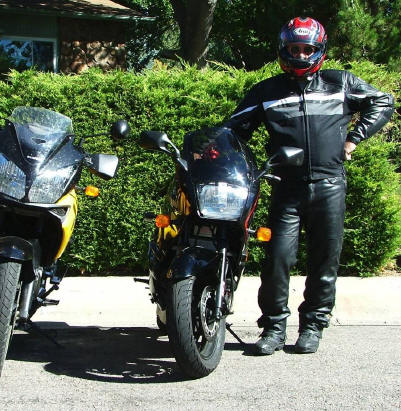
El Ninja Every Day
With a tank bag and a good backpack for light cargo, the riders took El Ninja for all
kinds of around-town jaunts…to school, meetings, and shopping, then quickly locked
up using the built-in fork lock and helmet lock (the ignition/lights key fits all). El Ninja
was parked in designated motorcycle lots and perpendicular or parallel car slots—
some that were too short for even a compact car. The side kickstand worked best for
quick parking, but El Ninja’s center stand can also be handy for tire changing and
some parking situations.
We were convinced that El Ninja was ideal for around-town trips and short trips into
the country. With 41 miles of around-town range, in many cases we were able to take
El Ninja out in the morning without needing to give much thought to how many possible
stops and miles we could ride that day. Every night, we zeroed-out the odometer,
plugged-in El Ninja, and had a full charge in the morning. After longer rides during the
day, we charged El Ninja midday, even though the batteries were not drained (not
allowing the batteries to deep cycle too often helps battery life).
Out on the streets and in parking lots, only motorcycle-savvy folks noticed that El
Ninja ran silently and had a "strange thing" (the motor) on its swing arm. Others
didn’t seem to notice there was anything different about El Ninja, so we removed
its right-side battery panel just to see if people would notice that the engine cavity
was filled with batteries. Some did notice, and when they realized that this unusual
motorcycle passes-up gas stations, they inquired about how to get an El Ninja of
their own, how far it would go on a charge, how long it took to recharge, and so forth.
|